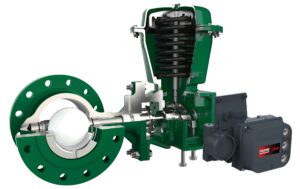Table of Contents
Control valves play a crucial role in various industries, determining the flow of fluids and gases in a system. Choosing the right type of control valve is essential for optimal performance and efficiency. In this article, we’ll delve into the key differences between rotary shaft valves and sliding stem control valves, providing insights to aid in decision-making.
Rotary Shaft Valves
Rotary shaft valves are dynamic components with versatile applications in different industrial settings. The rotary motion of the shaft regulates the flow of fluids, allowing for precise control. These valves are known for their adaptability, but they come with their own set of advantages and disadvantages.

Advantages of Rotary Shaft Valves
- Versatility: Rotary shaft valves can handle a wide range of applications, making them suitable for diverse industries.
- Maintenance Requirements: While maintenance is required, it is often less frequent compared to other valve types, reducing downtime.
Disadvantages of Rotary Shaft Valves
- Versatility: While versatile, these valves may not be the best choice for applications requiring extremely precise control.
- Maintenance Requirements: Despite being lower, maintenance is still necessary for optimal performance.
Applications:
Rotary shaft valves find applications in industries such as petrochemicals, pharmaceuticals, and wastewater treatment.
Sliding Stem Control Valves
Sliding stem control valves, on the other hand, operate with linear motion. The stem slides within the valve body, controlling the flow. These valves offer a different set of advantages and disadvantages, making them suitable for specific applications.





Advantages of Sliding Stem Control Valves
- Precision Control: Sliding stem valves excel in providing precise control over fluid or gas flow, making them ideal for applications requiring accuracy.
- Potential for Wear and Tear: With continuous sliding motion, these valves may experience wear and tear over time.
Disadvantages of Sliding Stem Control Valves
- Precision Control: While excellent for precision, sliding stem valves may not be as versatile as rotary shaft valves in certain applications.
- Potential for Wear and Tear: Regular maintenance is crucial to prevent wear and ensure consistent performance.
Applications: Sliding stem control valves are often preferred in industries like chemical processing, power generation, and refining.
Key Differences
Operating Mechanisms
Rotary shaft valves operate with a rotating motion, allowing for versatile applications. In contrast, sliding stem valves rely on linear motion, offering precision control.
Precision and Control
While both valve types control flow, sliding stem valves excel in precision applications, ensuring accurate and consistent results.
Maintenance Requirements
Rotary shaft valves generally require less frequent maintenance, making them suitable for applications where downtime must be minimized. Sliding stem valves, on the other hand, may need more regular maintenance to address wear and tear.
Industry-Specific Applications
The choice between rotary shaft and sliding stem valves often depends on the specific needs of the industry. Understanding the requirements is crucial for making the right decision.
Factors to Consider When Choosing
When selecting between rotary shaft and sliding stem valves, various factors must be considered:
- Industry Requirements: Different industries have specific needs, and the valve chosen should align with those requirements.
- Operational Needs: Consider the level of control and precision required for your operations.
- Long-Term Maintenance Considerations: Evaluate the long-term maintenance requirements and associated costs.
Real-world Examples
Case Study: Successful Application of Rotary Shaft Valves
In a petrochemical plant, rotary shaft valves proved instrumental in regulating the flow of various chemicals. Their versatility allowed for seamless integration into different processes, contributing to the overall efficiency of the plant.
Case Study: Sliding Stem Valves in Action
A power generation facility opted for sliding stem control valves to ensure precise control over steam flow. The linear motion of these valves played a crucial role in maintaining optimal operating conditions.
Decision-making Process
Choosing between rotary shaft and sliding stem valves involves a systematic evaluation:
- Evaluating Specific Industry Needs: Identify the unique requirements of your industry to narrow down the options.
- Cost Considerations: Evaluate the upfront and long-term costs associated with each valve type.
- Long-Term Benefits and Drawbacks: Consider the overall benefits and drawbacks, weighing them against your operational needs.
Emerging Trends
The field of control valves is evolving with technological advancements. Both rotary shaft and sliding stem valves are experiencing improvements, impacting their performance and applications. Stay updated on these trends to make informed decisions.
Expert Opinions
Seeking insights from industry professionals is invaluable when choosing the right control valve. Professionals can provide recommendations based on specific use cases, contributing to a well-informed decision-making process.
Conclusion
In conclusion, the choice between rotary shaft valves and sliding stem control valves depends on various factors. Understanding the key differences, considering industry-specific requirements, and evaluating long-term implications are crucial steps in making the right decision for your operations.
Read Also